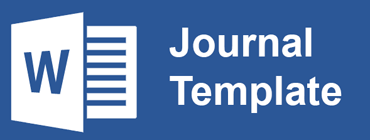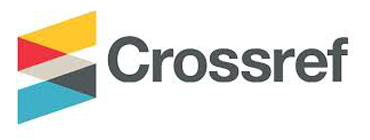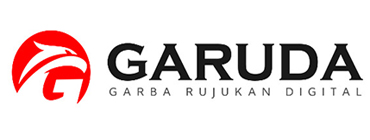THE EFFECT OF USING PLEASE (PICK-LIST-EVALUATE-ACTIVATE-SUPPLY-END STRATEGY) ON STUDENTS ACHIEVEMENT IN WRITING DESCRIFTIVE TEXT AT SEVENT GRADE OF Mts NURUL HAKIM TEMBUNG
Abstract
The purpose of this study was to determine the significant effect of the PLEASE (Pick-List-Evaluate-Activate-Supply-End) Strategy on student achievement in writing descriftive text in class VII Mts Nurul Hakim Tembung. This research used quantitative research with experimental design. The implementation was in class VII Mts Nurul Hakim Tembung. The researcher took 64 students consisting of 32 students for the experimental class and 32 students for the control class. In collecting the data, the researcher used test in essay test.. The researcher used two tests, the pre-test was given before the treatment and the post-test was given after the treatment in the learning process. Then the researchers analyzed the data using statistical formulas and Microsoft Excel 2010 with a significance level of 0.05. After analyzing the data, the researcher found that the value of tobserved was higher than the ttable. This can be seen from the tobserved (4.473)> t table (1.6) at the significance level of 0.05 and degrees of freedom (df) 62.It means that the alternative hypothesis (Ha) is accepted and the null hypothesis (H0) is rejected. It can be concluded that the PLEASE (Pick-List-Evaluate-Activate-Supply-End) strategy has significant effect on students’ writing achievement in descriftive text of seventh grade students at Mts Nurul Hakim Tembung. This is related to the results of observations which show that students are more interested and motivated in attending classes and enthusiastic during the teaching and learning process so that their descriptive writing achievement increases.
Keyword: PLEASE starategy, Students’achievement , writing descriptive text
Full Text:
PDFReferences
Al-Hilali, M Taquiddin, M. Mukhsin Khan. (2006). The Noble Qur’an (Madinah Maktaba Darussalam).
Arikunto, Suharsimi. (2009). Manajemen Penelitian. Jakarta: Rineka Cipta.
Brokop, Flo, and Bill Persall. (2009). Writing Strategies for Learners who are Deaf. Edmonton : NorQuestCollege.
David Nunan. (2003). Practical English Language Teaching. Singapore: Mc.Graw-Hill Education.
Dewi, Utami. (2013). How to write. Medan: La Tansa Press.
Doddy, Achmad. (2008). Developing English Competencies for Senior High School.
Jakarta: Bookkeeping Center. Ministry of National Education.
Fauziati, Endang. (2005), Teaching of English ad A Foreign Language (TEFL),Surakarta: Universitas Muhammadiyah Surakarta.
Fithriani, R. (2018). Cultural influences on students’ perceptions of written feedback in L2 writing. Journal of Foreign Language Teaching and Learning.
Fulwiler, Toby. (2002). College Writing: A Personal Approach to Academic Writing. Portsmouth NH: Boynton/cook Publisher, Inc.
Gay,L,R and Peter Airasian. (2000). Educational Research Competencies for Analysis and Application: Sixth Edition, New Jersey : Prentice-Hall inc.
Graham, Steve, Karen R, Harris. (2005). Writing Better: Effective Strategies for Teaching Students with Learning Difficulties. Paul HBrookes Publishing:
Hamidah Daulay, Sholihatul. (2017). Introduction to General Linguistics: Faculty of Tarbiyah and Teacher Training.
Hamka. (2015). Tafsir Al-Azhar. Depok: Gema Insani
Hammad, E.A. (2014). Palestinian university-level students’ use of writing strategies in relation to their EFL writing performance. Journal of Basic and Applied Scientific Research.
H.Brown, Douglas. (2004). Language Assessment: Principle and Classroom Practices. United States of America: Pearson Education
Handayana,Suri. (2013) :The Effect of Using Pick-List-Evaluate-Activate Supply-End (PLEASE) Strategy toward Students’ Writing Ability on Descriptive Paragraph at the Second Year of Al-Huda Islamic Junior High School Pekanbaru: FITK, UIN SUSKA RIAU.unpublished
Harmer Jeremy. (2003). The Practice of English Language Teaching. Cambridge: Longman.
Harmer, Jeremy. (2004). How to Teach Writing. New York: Essex: Pearson Education Limited.
Harvey, S, Wiener. (2003). Any Child can Write. Oxford: Oxford University.
Kunaasyaa. 2012. Ikatlah Ilmu dengan Tulisan. Accessed on November 9th 2020. https://kunaasyaa.wordpress.com/2012/11/08/ikatlah-ilmu-dengan-tulisan.html.
Langan Jhon. (2011). College Writing Skills. United States of America: McGraw Hill.
Luber, Julian. (2014). Descriptive Text. Retrieved on March 13th 2019
Mulyono. (2009). English Way 2. Jakarta: Quadra
Noprianto, Eko. (2017). Student’s Descriptive Text Writing in SFL Perspectives, Indonesia University of Education (UPI), Vol. 2(1).
Oshima, Alice and Ann Hogue. (2007). Introduction to Academic Writing. United States of America: Pearson Longman
Peha, Steve. (2003). The Writing Teacher’s Guide. Teaching That Makes Sense, inc.
Purwanti. (2008). English in Focus, for grade VII Junior high school(SMP/MTs). Jakarta: Bookkeeping Center. Ministry of National Education
Refnaldi, Monalisa. (2013).Journal of English Language Teaching, Vol.1(2).
Sartika, Dewiand Ratna Nery. (2018). Journal of English Language Teaching, Vol.2(1).
Syahrum & Salim. (2014). Metodologi penelitian kuantitatif. Bandung: Citapustaka Media
Savage Alice, Patricia Mayer. (2005). Effective Academic writing 2. Oxford: Oxford Universitiy Press
Sugiyono. (2008). Metode penelitian kuantitatif kualitatif dan R&D. Bandung: Alfabeta
Suparno, Yunus Muhamad.(2002). Keterampilan Dasar menulis. Jakarta : Universitas Terbuka.
Syafii. (2011). A writing of English for Academic Purposes. Pekanbaru: LBSI,
Wilkerson, Judy,R and William Steve Lang. (2007). Assesing Teacher Competency: Five Standards-Based Steps to Valid Measurement Using the CAATS Model. California: Corwin Press.
Wiyanto, Asul. (2004). Writing Paragraph Skills. Jakarta: Grafindo.
Refbacks
- There are currently no refbacks.

This work is licensed under a Creative Commons Attribution-NonCommercial-ShareAlike 4.0 International License.
INDEXING
Bright Vision by UIN Sumatera Utara Medan is licensed under a Creative Commons Attribution-NonCommercial-ShareAlike 4.0 International License.
Based on a work at http://jurnaltarbiyah.uinsu.ac.id/index.php/brightvision.









